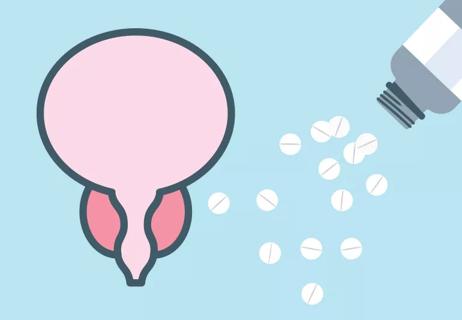A prostate massage is used most often for sexual stimulation

Massage therapy is an excellent way to ease pain and stress. But can your prostate benefit from massage, too?
Advertisement
Cleveland Clinic is a non-profit academic medical center. Advertising on our site helps support our mission. We do not endorse non-Cleveland Clinic products or services. Policy
According to urologist Petar Bajic, MD, prostate massage, sometimes called prostatic massage, is a historical treatment that has no place in modern urologic practice.
“In the past, healthcare providers used prostate massage to treat chronic conditions such as pelvic pain and prostatitis,” says Dr. Bajic. “If someone noticed improvements in their symptoms, it probably had nothing to do with their prostate. More likely, their problem was pelvic floor dysfunction, and the massage helped loosen those muscles.”
Dr. Bajic breaks down what a prostate massage is helpful for, and the importance of pelvic floor physical therapy.
Men have a prostate located below their bladder and in front of their rectum. The prostate is a walnut-sized gland that produces most of the fluid in semen. During ejaculation, the prostate’s muscles push this fluid out through the urethra.
A prostate massage can be given by another person, but you can also give yourself a prostate massage by inserting a finger into your anus and gently pressing against and massaging your prostate. Your prostate sits like a soft, rubbery circle up toward your belly button in front of your rectum.
The longstanding theory behind a prostate massage is that it helps express stagnant fluid and relieve symptoms of erectile dysfunction, painful ejaculation, prostatitis and pain in your pelvic region. But there needs to be more research into these areas, as there isn’t yet enough evidence to support these claims beyond small, anecdotal cases.
Advertisement
“There’s no evidence that a prostate massage provides any medical benefit,” reiterates Dr. Bajic. “In fact, you don’t need to put manual pressure on the prostate to release prostatic fluid. You can express this fluid more efficiently through ejaculation.”
People who seek a prostate massage to relieve symptoms often have pelvic pain or a history of what they’ve been told is prostatitis. Prostatitis is inflammation or infection of the prostate — and while it can be painful, it can often be treated with antibiotics or other treatments.
One of the most common causes of pelvic pain is pelvic floor dysfunction, a common condition associated with the inability to relax or coordinate your pelvic floor muscles in order to urinate or have a bowel movement (more on that below).
“Healthcare providers sometimes misdiagnose pelvic floor dysfunction as a prostate problem,” says Dr. Bajic. “But the underlying issue is usually in the muscles that support the pelvis.”
Prostate massages were more common decades ago, says Dr. Bajic. But when providers were massaging the prostate, they were unknowingly massaging the internal pelvic floor muscles. That’s why people’s symptoms improved temporarily.
A prostate massage is unlikely to provide lasting relief from your symptoms and it won’t solve the underlying issues that are causing you problems. Additionally, some risks associated with a prostate massage include:
Pelvic floor dysfunction is a common condition that affects people of any sex, but in men it can be caused by:
Your pelvic floor muscles can also weaken over time as you age or gain weight.
“I describe pelvic floor muscle dysfunction as a charley horse in the pelvis,” says Dr. Bajic. “Most often, the muscle is too tight and doesn’t have the normal range of motion.”
If you have pelvic floor muscle dysfunction, you may experience a wide range of symptoms, including:
Today, if your healthcare provider diagnoses you with pelvic floor muscle dysfunction, they may prescribe pelvic floor physical therapy, which focuses on restoring function to your pelvic floor muscles.
Pelvic floor physical therapy involves stretching and lengthening your contracted (tight) bands of muscle. Once the range of motion of those muscles returns, then you can build up strength by doing pelvic floor exercises.
Advertisement
“A mistake people often make when they read about pelvic floor dysfunction is to start doing Kegel exercises before meeting with a physical therapist,” says Dr. Bajic. “Those exercises are for strengthening. Don’t do Kegel exercises until you deal with any injury or contracted muscle and get back your range of motion. Then, you can increase your muscle strength with Kegel exercises.”
Some common questions about pelvic floor physical therapy include:
Therapists who perform pelvic floor physical therapy have specialized training. They provide an external and internal assessment of your range of motion, muscle strength and contraction. The internal assessment involves inserting a finger into your rectum to feel the internal muscles of your pelvic floor. This exam helps pinpoint where the problem areas are.
“Not all physical therapists perform internal exams, even though they’re an important part of the evaluation,” notes Dr. Bajic. “If you’re looking for a pelvic floor physical therapist, make sure they do both internal and external assessments.”
Once the therapist evaluates your condition, they’ll develop a treatment plan of stretches and exercises. Treatment typically lasts 10 or 12 weeks, though it can go longer. It’s not unusual to take that long to notice improvement.
Advertisement
Pelvic floor physical therapy is usually very effective, says Dr. Bajic. If you continue to experience symptoms, your provider will look for other underlying conditions, such as a pinched nerve. They may also try trigger point injections or biofeedback therapy to encourage muscles to relax.
A prostate massage can be sexually stimulating for some and is a common practice among men who have sex with men. If you’re going to try a prostate massage or any type of anal sex, Dr. Bajic recommends using plenty of lubrication to minimize the risk of injury.
There are also different kinds of sex accessories designed specifically for prostate stimulation. If you decide to use one, be patient, use lots of lubrication and make sure the product is safe and won’t get stuck in your rectum.
The bottom line with prostate massages is that it’s not an effective treatment for prostate problems or pelvic pain. Using it with a consenting partner during sex is OK, but don’t rely on it as a medical therapy.
Advertisement
Learn more about our editorial process.
Advertisement

Trouble peeing and leaking urine are common indicators of prostate gland issues

Research raises doubts about the effectiveness of supplements for your prostate

Foods that can help, and harm, your prostate

Arousal without orgasm can be uncomfortable, but it’s no reason to pressure sexual interactions

The list includes eating a healthier diet, managing your weight and reducing stress

Adjusting your diet to focus on plant-based, whole foods may improve erectile function

Here’s what you need to know about ED, which most men experience to some degree during their lives

‘Morning wood’ is a natural bodily function and a sign of sexual health

Babies can get congested easily, but you can calm their cough by keeping them hydrated, using nasal drops and running a humidifier

Weight loss may cause loose, sagging skin and muscle loss to your rear

Several conditions, like vitiligo and fungal infection, can cause a loss of pigmentation, leading to white spots or patches on your skin